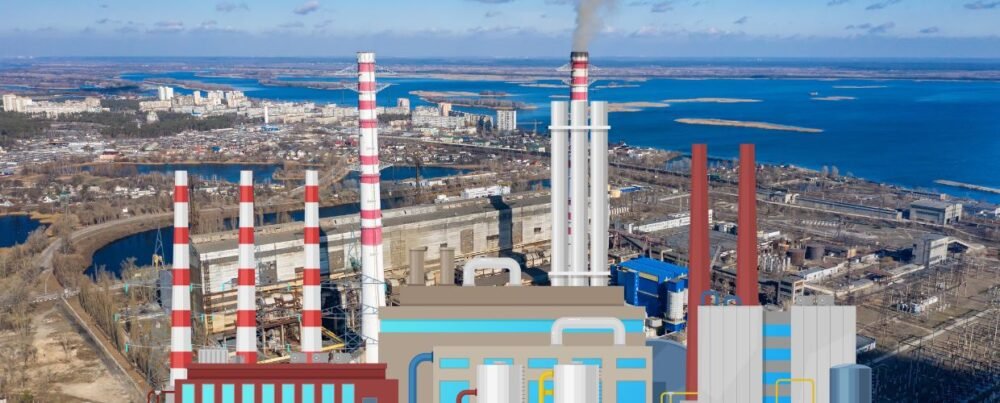In the quest for clean and renewable energy sources, Ocean Thermal Energy Conversion (OTEC) has emerged as a beacon of innovation, harnessing the vast and untapped energy potential of the world’s oceans. As the world faces the dual challenges of climate change and energy security, OTEC offers a unique opportunity to tap into the ocean’s natural processes to generate sustainable and reliable power.
Ocean Thermal Energy Conversion
Ocean Thermal Energy Conversion is a technology that capitalizes on the temperature difference between warm surface waters and cold deep waters. This temperature gradient is used to produce electricity through a heat engine cycle. Depending on the working fluid used, OTEC systems can be closed- or open-cycle.
The allure of OTEC lies in its potential to provide consistent and renewable power generation. Unlike solar and wind, which are subject to weather fluctuations, the ocean’s temperature gradient remains relatively stable, offering a reliable energy source regardless of time or weather conditions.
Harnessing Ocean’s Thermal Gradient
Ocean Thermal Energy Conversion offers numerous environmental benefits. It generates electricity without growing greenhouse gas emissions, making it a viable option for mitigating climate change. Additionally, OTEC systems have a relatively low visual and acoustic impact on marine ecosystems compared to offshore energy sources like wind turbines.
The deployment of the systems also can stimulate economic growth and development. Coastal regions with OTEC resources can leverage this technology to meet their energy needs, reduce reliance on imported fossil fuels, and create jobs in Ocean Thermal Energy Conversion facility construction and operation.
Challenges and Technological Advancements
Despite its potential, Ocean Thermal Energy Conversion faces several challenges that must be addressed for widespread adoption. One significant challenge is the upfront cost of building OTEC infrastructure, which includes heat exchangers, cold water pipes, and power generation equipment. The initial investment can be substantial, but it is important to view it as an investment in a sustainable and resilient energy future.
Technological advancements are critical to overcoming these challenges. Research and development efforts are focused on improving heat exchanger efficiency, optimizing system design, and finding cost-effective materials for OTEC infrastructure. As advancements continue, the costs associated with OTEC deployment are expected to decrease, making it more accessible to a broader range of regions.
The Potential of Deep Seawater
In addition to electricity generation, Ocean Thermal Energy Conversion has the potential to unlock a range of other applications, particularly in regions with access to deep seawater. Cold, nutrient-rich deep seawater can be used for aquaculture, mariculture, and desalination. By leveraging the natural cooling properties of deep seawater, Ocean Thermal Energy Conversion can simultaneously address energy needs and support other vital industries.
Furthermore, OTEC’s ability to produce fresh water through desalination can be crucial in water-scarce regions. This dual-purpose energy and water production approach aligns with sustainable resource management principles and holistic development.
Global Progress and Future Prospects
Around the world, pioneering projects are underway to demonstrate the feasibility and potential of Ocean Thermal Energy Conversion technology. The Natural Energy Laboratory of Hawaii Authority (NELHA) hosts an OTEC facility that produces electricity and fresh water. In the Caribbean, efforts are being made to harness OTEC’s potential to power island nations and reduce their dependence on imported fossil fuels.
As the world shifts toward renewable energy sources, OTEC is poised to play a significant role in the energy mix. Its unique attributes—reliable power generation, minimal environmental impact, and diverse applications—make it valuable for addressing energy security and sustainability challenges.
As we navigate the blue energy frontier, Ocean Thermal Energy Conversion is a testament to human innovation and our capacity to work harmoniously with nature. We harness the ocean’s thermal gradient to generate clean and renewable energy, foster economic development, and contribute to a more sustainable and resilient world.
Conclusion
Ocean Thermal Energy Conversion offers a glimpse into a future where our energy needs are met by the world’s oceans’ vast, yet untapped, potential. It’s a reminder that the solutions to our energy and environmental challenges are not limited to the land; they extend into the depths of the seas that cover more than two-thirds of our planet.
The journey toward a cleaner energy future is not without challenges. Still, OTEC represents a beacon of hope—a symbol of our ability to explore new horizons, embrace cutting-edge technologies, and shape a world where the power of the seas is harnessed for the benefit of all. Just as the oceans have shaped history, Ocean Thermal Energy Conversion has the potential to shape the course of our energy future, ensuring a legacy of sustainability, responsibility, and harmony with the natural world.












